Article by Berlin Art Link in Helsinki // Tuesday, Feb. 27, 2018
Maja Luutonen describes herself as an artist rather than a painter, despite working primarily with paint on paper. By incorporating objects from her working process into her work, her recent practice has begun to explore the boundaries between painting and immersive installation. Luutonen’s use of sculptural elements also playfully interrogates the structure of her paintings themselves; their placement in relation to the paintings creates multi-layered images. In this way, her interest in spatiality and the built environment manifests itself both visually in the two-dimensional surface of her paintings and physically through the space between the viewer and her work. Last year, Luutonen was selected as the inaugural recipient of a new art project, the Kiasma Commission by Kordelin. With an aim to provide international exposure for Finnish artists, the commission results in a solo exhibition at Studio K, part of Kiasma, the museum of contemporary art in Helsinki. Just before the opening of her show at Studio K earlier this month, Berlin Art Link met the artist to discuss the continuing development of her practice and the future of the Finnish contemporary art scene.
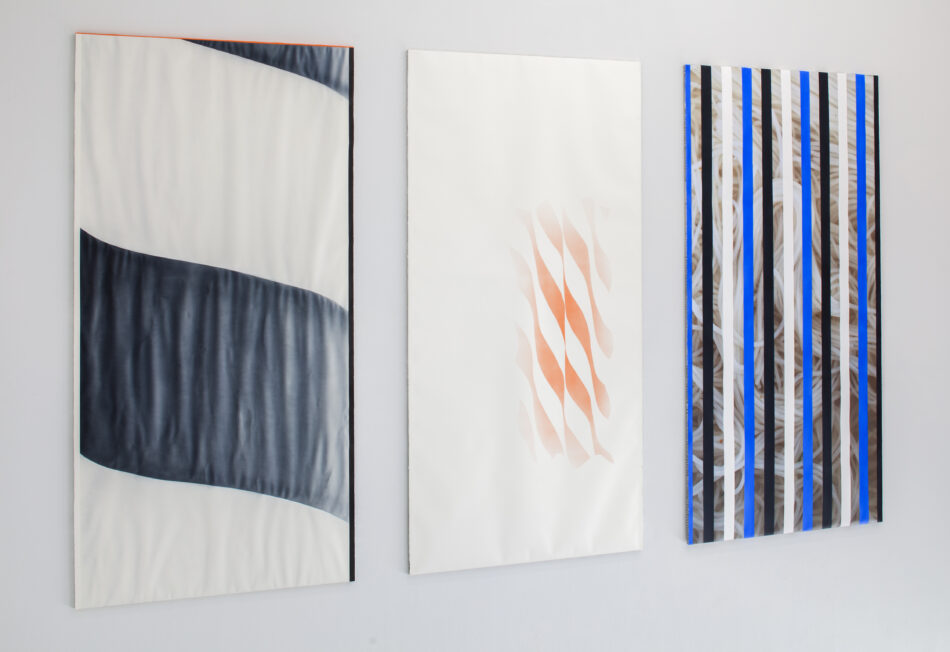
Maija Luutonen: ‘Patch’, 2018, part of the installation, 280 x 140 x 2cm (each painting) // Photo courtesy of the Finnish National Gallery and Petri Virtanen
Berlin Art Link: How did you decide what to present in this exhibition?
Maija Luutonen: It all comes from an experience I had with building a solo show at the space I also co-run. I brought in the works to that space and my plan was to spread them quite strictly in a row on the walls as they were all the same size. I always attach the works on boards because they are just paper sheets and that makes it easier to try different settings. They were standing on their own, leaning on the wall and there were some renovations going on whilst I was doing the installation. It felt like there was something in that way of presenting the work that was missing, so I wanted to try it here. I wanted to look at that way of presenting the work and also to keep some of the equipment that I use while working on the installation or works and show it as part of the installation.
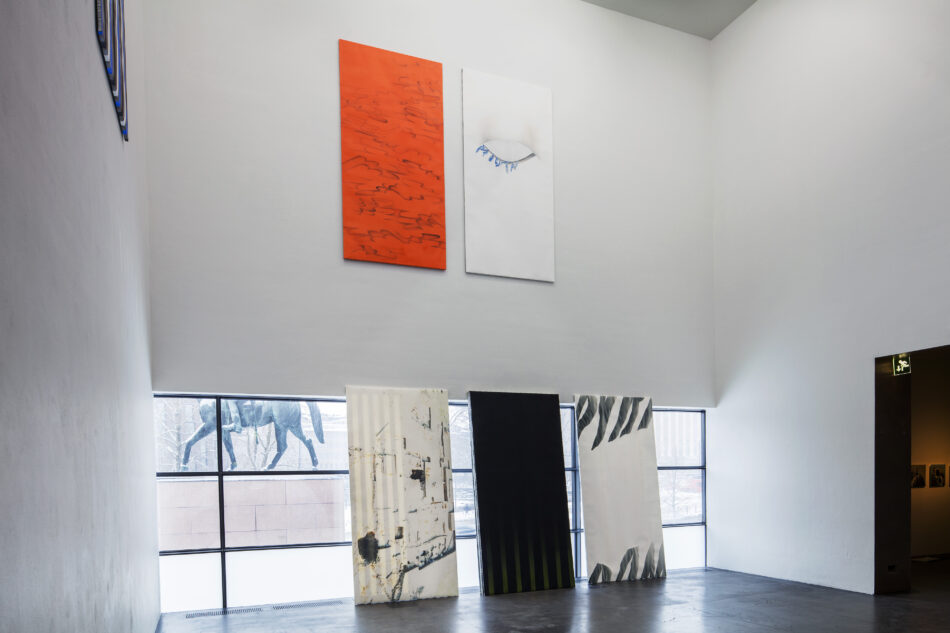
Maija Luutonen: ‘Patch’, 2018, part of the installation // Photo courtesy of the Finnish National Gallery and Petri Virtanen
BAL: Why did you decide to present the process pieces?
ML: That comes from thinking about reduction a lot. I reduce information all the time while my work is progressing, and that’s my way of making images. It’s like trying to distill something or make a very dense type of information to be presented in the works. That’s a natural process for me but then I have been thinking that, even if it is something that I like to do, maybe I shouldn’t always do that. Maybe I should leave a trace or show the other possibilities, and so I chose to work like this. I was a little bit afraid that it might be too didactic or “here’s the deconstruction and here are the finished works,” but it’s difficult for me to see that. It’s so new, I need to have time to think about it.
BAL: How do you think this exhibition continues with themes and your exploration with materials from your overall practice?
ML: It’s a very clear continuation, just adapted to the type of demands that museum spaces have. It’s some things that I have done before and some things that I haven’t done before. Some things I never managed to do before because there was no time, I had no resources, or I didn’t have enough people to help, or I was lacking some expertise. But then there are also things that I couldn’t do because it was for a museum and there are certain demands. They’ve been super helpful, always trying to find a solution, but of course you there are limitations because so many people are coming. Perhaps it would be a bit more natural to me to have even less fragility and less control, but it’s still interesting to try and work with this kind of setting.
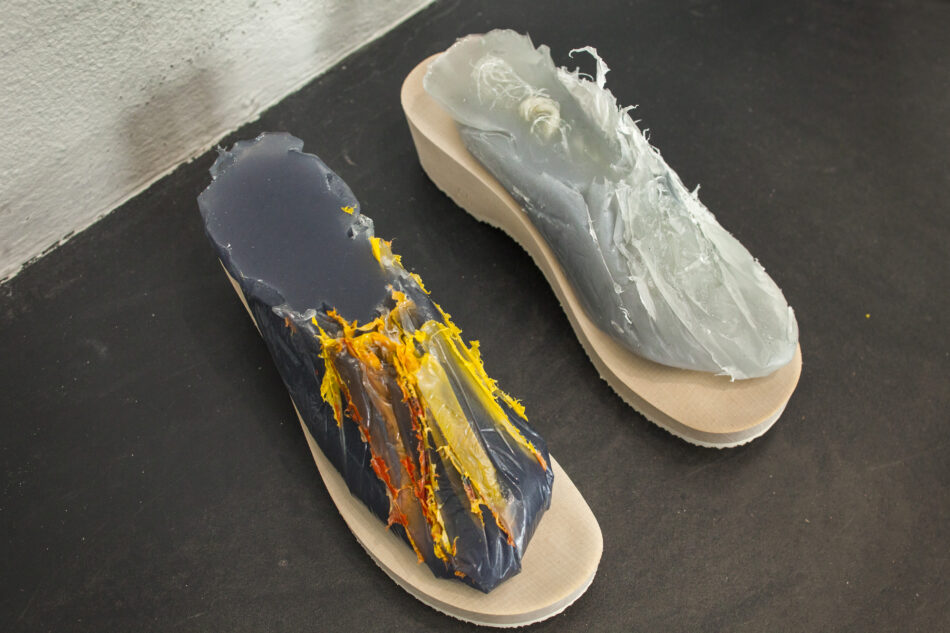
Maija Luutonen: ‘Patch’, 2018, part of the installation // Photo courtesy of the Finnish National Gallery and Petri Virtanen
BAL: Is there anything important about your practice or this exhibition that you feel hasn’t been discussed up to this point that you’d like to share?
ML: I’ve talked about different installation possibilities quite a lot, but for me, I think that’s a side-path because it’s so natural that things are never the same. I find it funny that in a museum they document this installation and then they’ll look at the documentation images if they want to present it again. I’m not pretending I know 100 percent what I’m doing. This is just one version and it’s self-evident to me that’s the way it should be. Of course, in the work, I’m more focused on the actual objects or the paintings or the panels, and their relationship to each other and to me than about the future of the work and its connection to being in the collection [of the Finnish National Gallery]. I also haven’t really talked about the role of the silks, the folded images, and the objects. I’m thinking about the silk that is lying on top of one of the panels as a scarf, so the painting is wearing another image or another work. I’m giving agency to the painting; it’s wearing another painting. There are multiple reasons why I make what I do, but I’m trying to play with the feeling of the paintings and question what they are and what the role is of all the different parts.
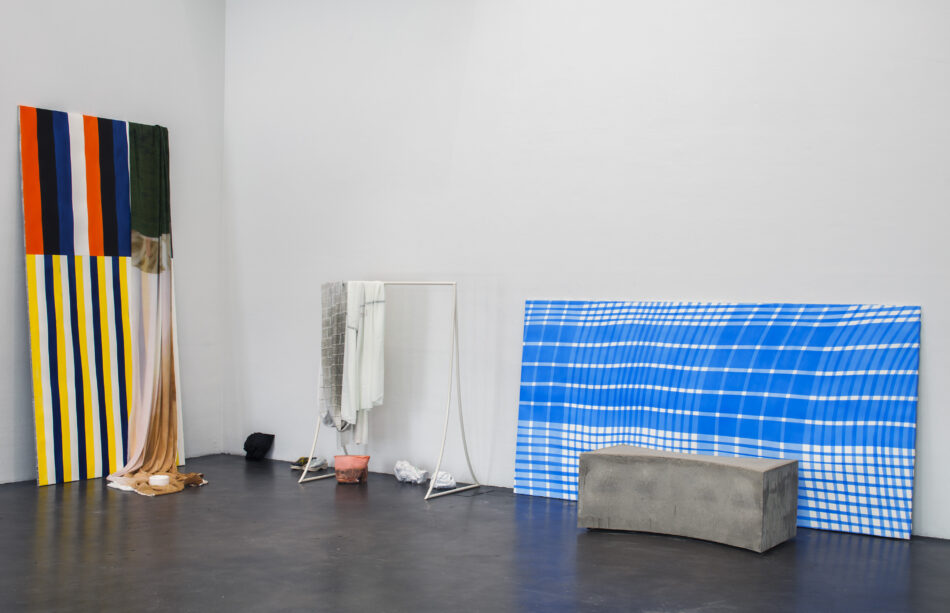
Maija Luutonen: ‘Patch’, 2018, part of the installation //Photo courtesy of the Finnish National Gallery and Petri Virtanen
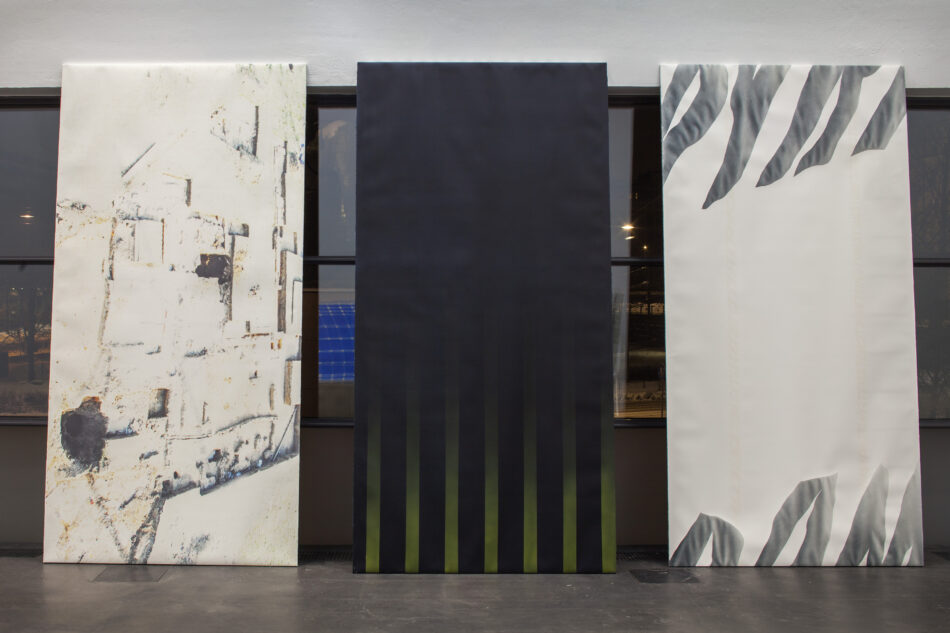
Maija Luutonen: ‘Patch’, 2018, part of the installation //Photo courtesy of the Finnish National Gallery and Petri Virtanen
BAL: Within the Finnish art scene, what do you feel you and others need from external sources in order to move forward with your career as an international artist?
ML: We need young people to start galleries and start exhibition spaces. There should be more support for people who want to start or open spaces or if you want to collect art. There should always be more financial support because nobody can live off their art unless they get grants. There’s a structural problem in Finland and there are things that are definitely lacking like there are not a lot of galleries that take part in international art fairs and there might not be many curators who would be interested in the type of work that I do coming [to this exhibition]. I’m sure that [Kiasma Commission] can help, but the problem still exists and it’s quite difficult to approach that problem through one person.
Also, even if there are already quite a lot of artist-run spaces, there could still be more diversity and more specific programs. For example, an artist-run space that has a very tight program around a specific type of artist or a curated program with somebody’s vision behind it. A lot of these artist-run spaces make the program according to the applications, so I think it would be better if there weren’t so many open calls in order to create more focused programs.
Exhibition Info
MUSEUM OF CONTEMPORARY ART KIASMA
Maija Luutonen: ‘Kiasma Commission by Kordelin’
Exhibition: Feb. 9 – Jul. 29, 2018
Mannerheiminaukio 2, FIN-00100, Helsinki, Finland, click here for map




















